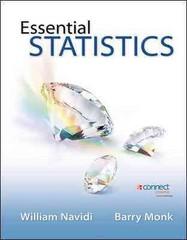Question
Business Plan During this course, you have learned to develop all the essential elements of a Business Plan, it was either an existing company on

Business Plan During this course, you have learned to develop all the essential elements of a Business Plan, it was either an existing company on the NASDAQ exchange which is the "American stock exchange, which is located at One Liberty Plaza in New York City known as the New York Stock Exchange" or "a company that you would like to start one day". Some of your plans will be hypothetical, as access to certain information in the company is restricted, but you can focus on the actual existing customers and products or services the company offers to the public. If you are developing your own company it will be made up so just answer the questions that are being asked.
Attached is a Business Plan Template, fill in the information it is asking for it is under the Home Tab, under e-text.
This week is the final step to completing the Business Plan. The Executive Summary. It comes first in the Business Plan but is wrote last. It is a summary of everything you wrote. The sections you should include in the Executive Summary is:
Executive Summary This section is a summary of the information from the pages that follow. Prepare it last, after the business plan has been written. It should not exceed two pages. Headings to use in the Executive Summary:
A. Vision/Mission Statement B. Company Summary C. Products/Services D. Market Assessment E. Strategic Implementation F. Expected Outcomes
The Executive Summary is a brief description of A-F that that is above. It is part of a Business Plan. Your Business Plan is mostly steps 1-2-3. The executive summary completes it.
Your final project should include in one document:

Step by Step Solution
There are 3 Steps involved in it
Step: 1

Get Instant Access to Expert-Tailored Solutions
See step-by-step solutions with expert insights and AI powered tools for academic success
Step: 2

Step: 3

Ace Your Homework with AI
Get the answers you need in no time with our AI-driven, step-by-step assistance
Get Started


